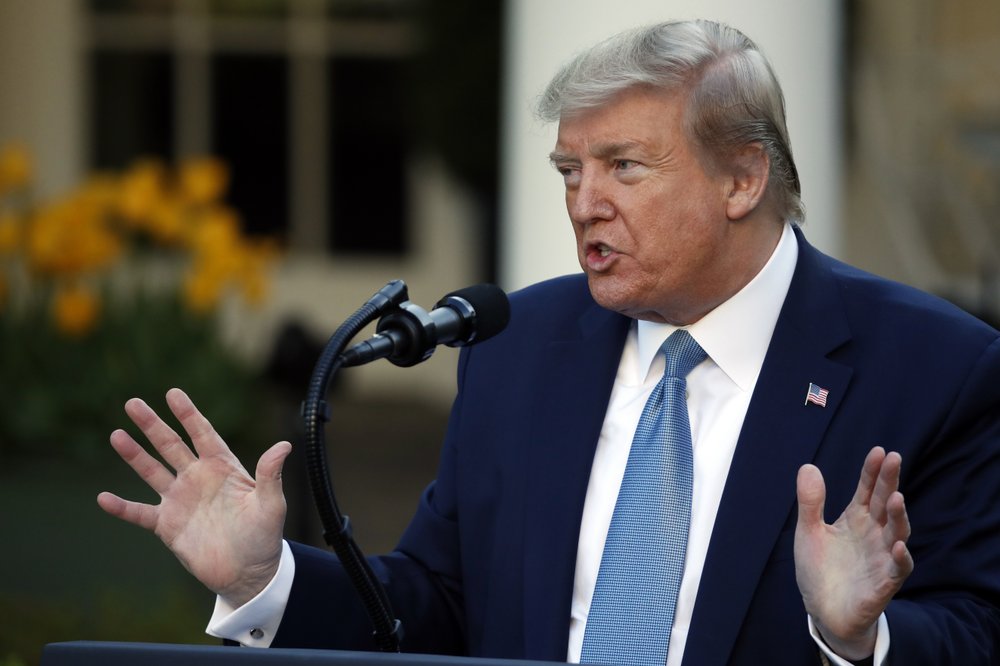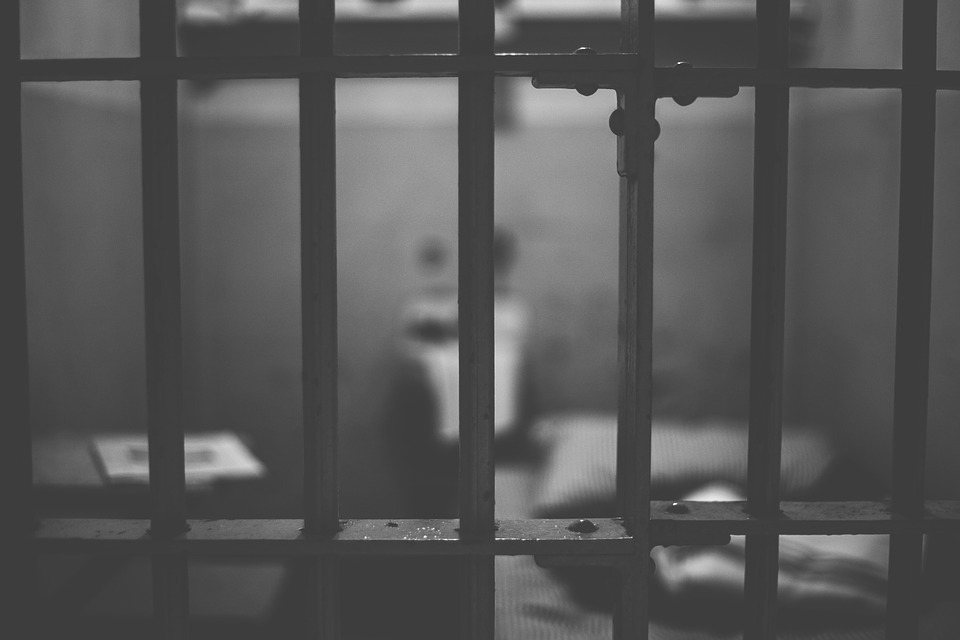Coronavirus
Out to regain footing, Trump shifts virus focus to economy

WASHINGTON (AP) — The White House released new guidelines Monday on coronavirus testing and reopening businesses as President Donald Trump sought to regain his footing after weeks of criticism and detours created in part by his sideshows. Trump appeared reluctant to cede the spotlight, with on-off-on plans for a press conference to capture the flurry of action.
As part of the guidelines effort, the Centers for Disease Control and Prevention released new priorities for virus testing, including people who show no symptoms but are in high-risk settings.
The White House unveiled what it described as a comprehensive overview of its efforts to make enough tests for COVID-19 available so states can sample at least 2.6% of their populations each month. Areas that have been harder hit by the virus would be able to test at double that rate, or higher, the White House said. Trump and administration medical experts outlined the plan on a call with governors Monday afternoon, and Trump announced that businesses such as CVS would expand access to tests across the country.
“Testing is not going to be a problem at all,” Trump said later in the Rose Garden. Many of the administration’s past pledges and goals on testing have not been met.
Monday’s developments were meant to fill critical gaps in White House plans to begin “reopening” the nation, ramping up testing for the virus while shifting the president’s focus toward recovery from the economic collapse caused by the outbreak.
At one point the White House announced there would be no Trump briefing, but he appeared to have other ideas. His insistence on being the star of the daily briefing show came as his greatest asset in the reelection campaign — his ability to dominate headlines with freewheeling performances at his daily briefings — was increasingly being seen as a liability. At the same time, private Republican Party polling shows Trump’s path to a second term depends on the public’s perception of how quickly the economy rebounds from the state-by-state shutdowns meant to slow the spread of the virus.
Days after he set off a firestorm by publicly musing that scientists should explore the injection of toxic disinfectants as a potential virus cure, Trump said he found little use for his daily task force briefings, where he has time and again clashed with medical experts and reporters. Trump’s aides had been trying to move the president onto more familiar and, they hope, safer, ground: Talking up the economy in more tightly controlled settings.
But hours after the White House scrubbed the nightly briefing from the official White House schedule, it reversed course.
Spokeswoman Kayleigh McEnany said that briefings would be held later in the week but “they might have a new look to them, a new focus to them.”
“We’re entering a phase of looking to reopen the country and with that, the president will be focusing a lot on the economy,” she said.
On the conference call with governors, Trump suggested that many states should consider reopening schools before the end of the academic year, easing the way for parents to go back to work.
“Some of you might start thinking about school openings because a lot of people are wanting to have the school openings,” Trump told the governors. The Associated Press obtained an audio recording of the call.
Among Monday’s announcements was a new “testing blueprint” for states. It includes a focus on surveillance testing as well as “rapid response” programs to isolate those who test positive and identify those with whom they came in contact. The administration aims to have the market “flooded” with tests for the fall, when COVID-19 is expected to recur alongside the seasonal flu.
Jeremy Konyndyk, a disaster preparedness expert who helped lead the Obama administration response to Ebola, said the Trump administration’s testing plans are well short of what is needed.
Researchers at Harvard have estimated the country needs to be testing a minimum of 500,000 people per day, and possibly many more. Konyndyk said we should be aiming to be doing 2 million to 3 million tests per day.
“Over the past month, we’ve doubled or if you want to be really generous tripled the testing capacity in this country. We need to take where we are now and expand it 10-fold,” Konyndyk said.
The White House argues that the limiting factor for the nation’s COVID-19 testing is no longer the test kits or the chemicals and supplies needed to conduct the tests but rather the availability of resulting samples — either because guidelines on who could be tested are too stringent or because there are not enough health workers able to take nasal swabs.
The CDC also has been working on more detailed guidelines on reopening schools, restaurants and other establishments. Draft guidelines sent by the CDC to Washington include a long list of recommendations for organizations as they begin to reopen, such closing break rooms at offices, schools spacing desks six feet apart and restaurants using disposable plates and menus. The draft guidance was obtained by The Associated Press from a federal official who was not authorized to release it.
Some states have started to ease closure orders, and Trump is expected to spend coming days highlighting his administration’s efforts to help businesses and employees. Aides said the president would hold more frequent roundtables with CEOs, business owners and beneficiaries of the trillions of dollars in federal aid already approved by Congress, and begin to outline what he hopes to see in a future recovery package.
Trump last left the White House complex a month ago, and plans are being drawn up for a limited schedule of travel within the next few weeks, aides said. It would be a symbolic show that the nation is beginning to reopen.
The shift comes in conjunction with what the White House sees as encouraging signs across the country, with the pace of new infections stabilizing and deaths declining.
Still, medical experts warn that the virus will continue to haunt the country at least until a vaccine is developed. And they say the risk of a severe second wave is high if social distancing measures are relaxed too quickly or if testing and contact tracing schemes aren’t developed before people return to normal behaviors.
Worries are growing among Republicans and Trump allies over the president’s increasingly erratic handling of the coronavirus crisis.
For weeks, Republicans have grown concerned that Trump’s daily briefings were doing him grievous political damage. Though Trump cherished the TV ratings, the modest polling bump he received in the early days of the pandemic has vanished amid a flurry of misstatements and partisan fights.






